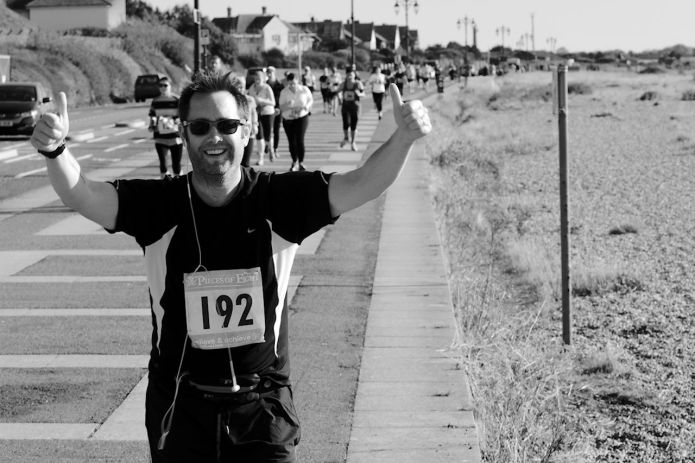#1: Concrete Curve

#2: In My Sights

#3: Arcs

#4: On The Hook









According to the Tory party conference, they are planning to “do something” about the European Court of Human Rights, and to stop the British government being overruled by the ECHR. Most of the time we hear about the work of the ECHR through ridiculous stories but the court deals with tens of thousands of cases a year. So most of the time we do not get to hear about it’s work. After all sensible decisions do not make good news stories.
Let’s look at the rights that the ECHR is there to protect :-
Which is a long list, and could do with some additional explanation, which can be found here.
The reason the Tories are giving for abolishing our human rights is that they don’t want interference from the European Union in their actions. Which when you come down to it is kind of worrying – our government finds our human rights and the organisation created after World War II to protect those rights “inconvenient”.
There are those who will ramble on about sovereign rights which are important, but not as important as human rights. People are more important than states.
The more the Tories want to evade the oversight of the ECHR, the more I want the ECHR to be keeping an eye on the behaviour of “our” government. The judges of the ECHR may be unelected but they’re more trustworthy than a bunch of corrupt politicians who find our human rights inconvenient.

(With apologies to John Brunner for stealing and mangling the title of one his books which happens to be a considerably appropriate choice)
The Shellshock vulnerability, where a 23-year old vulnerability in the bash Unix shell can sometimes be exploited by attackers to run their own code on a vulnerable server. So far this vulnerability has been found to be exploitable with certain popular services running on Unix-based systems (including Linux).
Because I happen to be one of those going around telling people to fix their servers. And because I needed a place to mouth off about some of the more idiotic reactions I have encountered.
Well it’s unlikely that this will cause the collapse of human civilisation, and it’s probable that your fridge will continue to work.
It’s like being asked how long a piece of string is whilst you’re still hauling it in and have not found the other end yet. It could be a great deal worse than expected or a bit of a damp squib :-
Ultimately we have to wait and see how bad it is likely to be. Peering in to a crystal ball is always dangerous but my best educated guess is that :-
Most early operating systems were controlled with some sort of command line where you would enter a command at a terminal, hit return, and then the computer would respond to your commands – a bit like DOS whose descendent can be discovered on a Windows system if you ever run cmd.exe. One of the innovations introduced by Unix was the concept of the user selecting which command processor to use and this command processor become known as the shell.
Most Unix shells allowed some level of programming initially to make repetitive interactive tasks easier to perform, but this eventually become shell scripting where useful functions could be made available persistently and to other users by writing a sequence of commands into a file.
The concept of replaceable shells allowed early Unix users to chose between various different shells – initially the Bourne shell (sh), and the C-Shell (csh), with improved shells coming along over time – the TENEX C-Shell (tcsh), the Korn shell (ksh), my shell of choice: Z-shell (zsh), and of course the Bourne Again Shell (bash).
Unix (and Linux … and Windows too) have the concept of environment variables where variables can be set to some value and that value will be available to child processes. As an example, the PATH environment variable is set when someone logs in, and is used to specify where to search for programs that are not supplied with a full pathname.
For instance, if you were to enter the command ls into a terminal window, this would be translated to the absolute path /bin/ls or c:\cygwin\bin using a the PATH environment variable.
Bash has a feature where it allows shell functions to be defined within an environment variable; however trailing code following the function is run.
Normally that would not matter, but when an attacker can provide the contents of the environment variable, then that attacker has a way of running their own code where they should not be able to.
Because it is the most serious way of exploiting this vulnerability discovered so far, everyone has concentrated on exploiting this vulnerability through a web server.
Most web servers use environment variables as a way of passing information about a request (i.e. data supplied by an attacker) to any scripts they run; when this script is a bash script or the non-bash script invokes another program via bash (very common amongst lazy programmers) then an attacker can run their own code on the server.
Let us distinguish between vulnerable where a program with a serious flaw is installed, and exploitable where an attacker can make use of that vulnerability. Because if you just fix situations where a known exploit exists, you are still exposed to unknown exploits. And it is distinctly possible that attackers will develop more and more ways of exploiting this vulnerability over time.
The short answer to the question of what is vulnerable is that every device with bash installed is vulnerable.
To those thinking that only Linux servers are vulnerable, the list of what is vulnerable will probably come as a bit of a surprise :-
In the long term, it is possibly the last category that is the most exploitable because such devices are rarely updated, are assumed to be safe, and are frankly the most likely to be running rancid code that is easily exploitable.
With worms actively exploiting this hunting down all the vulnerable web servers, it’s time to ask about means to limit the damage :-
Well we’ve lost our brief opportunity to send scad loads of illegal immigrants back home north in the window between Scotland becoming independent and it joining the European Union 🙂
Now thing get interesting … because of the promises of the “No” campaigners, Scotland has been given some vague promises of greater devolution with more powers for the Scottish parliament.
Which has been immediately seized upon by the Welsh parliament and the Northern Ireland parliament as justifying extra powers for their own parliaments.
But what about an English parliament? The Tories have ruled that out straight away. I’m not sure I want an English parliament, but I do know that I would like to have a discussion on the merits of one. Ruling out the option of an English parliament is representative of the contempt the Tories have for the will of the people.
If the Welsh, Scottish, and Northern Irish are mature enough for the responsibility of devolved powers, shouldn’t the English be considered mature enough too? Admittedly, the English do have a tendency to send too many vote the Tories’ way, but perhaps giving us some additional responsibility will lead us to leave our childish ways behind us.
But perhaps England is too large a unit rub shoulders with Wales, Scotland, and Northern Ireland in a UK parliament. Perhaps we should be considering a larger number of smaller sub-countries. Vehement English nationalists would be up in arms at the suggestion that we can sub-divide England – which by itself is a reason to consider the idea.
England as a country is an artificial creation brought about through conquest, and there is no reason to devolve powers to England if those powers could be devolved to smaller and more sensibly sized sub-countries. As an example, what about :-
In the same sense that the UK is too large for us to feel connected to the government, so would England be.
If we are going to look again at how the UK is structured, we need to look closely at all the options no matter how radical. It’s all too possible that the politicians will do as little as possible to keep their comfortable lives the same.